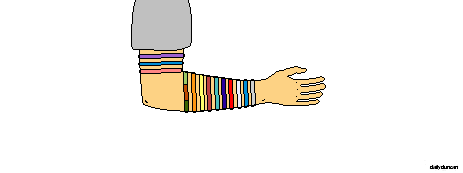What do the Lance Armstrong, Michael J. Fox and the Christopher Reeve Foundations have in common? Besides being established by and named after a celebrity, these three organizations were all devoted to eradicating the very condition with which their founder struggled.
These men are (or were) hailed for their contributions to these causes, but is it really heroic to try and cure a condition only after you’re diagnosed with it? Surely these men didn’t create a charity organization in an effort to cure themselves, rather for others in the world struggling with the same condition. But if their motivation was the good of others, then why did they only begin their crusades once they were personally affected? Perhaps human empathy is more of an automated response than a noble pursuit.
Before moving forward, let’s be clear about this subject: these are serious issues that cause real and terrible suffering. Our goal here is merely to explore the peculiar ways in which we react to them.
Supporters of foundations like the ones we mentioned believe that empathy can be spread by generating awareness. These concerned folk band together to form special interest groups, which seek to advance only a single, specific cause. Their objective is to use whatever means necessary to make known the extreme importance of their concern. In addition to snatching up nearly every date on the calendar, they have also exploited the light spectrum as an instrument of awareness. Because color is simple and pervasive it makes an ideal canvas on which to paint one’s message.
The use of color as a medium is most commonly advanced through the display of ribbon-shaped bumper stickers and plastic bracelets. Here’s a chart which identifies few colors and the movements they represent:
| Melanoma | Gang Prevention | Death | |||
| Diabetes | Asthma | Brain Cancer | |||
| Peace | Brain Injury | Bone Cancer | Terrorism | Poverty | Adoptees |
| Tobacco | Colorectal Cancer | ||||
| Arthritis | Victim’s Rights | Free Speech | Water Quality | Water Safety | |
| Drunk Driving | Child Abuse | Colon Cancer | Tobacco | Dystonia | Education |
| Prostate Cancer | Scleroderma | Twin-to-Twin Transfusion Syndrome | |||
| Epilepsy | Cancer | ||||
| Eating Disorders | Stomach Cancer | Pulmonary Hypertension | |||
| Pancreatic Cancer | Testicular Cancer | Thyroid Cancer | Lupus | Alzheimer’s | ADD and ADHD |
| Brain Aneurysm | Thrombosis | Headaches | Cesarean Section | Adults with Disabilities | |
| AIDS and HIV | Drug Abuse | Heart Disease | Burn Victims | Stroke | Drunk Driving |
| Breast Cancer | |||||
| Leukemia | Hunger | Cultural Diversity | Animal Rights | Self-injury | |
| Support for Troops | Suicide Prevention | Adoptive Parents | Bladder Cancer | Spinda Bifida | Endometriosis |
| Childhood Cancer | Sport Therapy | ||||
| Parkinson’s | Depression | Bipolar Disorder | Anxiety Disorders | Children with Disabilities | |
| Emphysema | Lung Cancer | Multiple Sclerosis | |||
| Ovarian Cancer | Cervical Cancer | Uteris Cancer | Sexual Assault | Tsunami Victims | |
| Pedestrian Safety | Lyme Disease | The Environment | Celiac Disease | ||
There are many more patterns than what are represented above, and many more causes associated with each one. The color purple, for example, can be tied to over thirty distinct movements. In their inability comprehend the scope of such behavior, special interest groups have devalued the meaning of color. They fail to realize that if everything is special then nothing is special. But this doesn’t discourage supporters from proudly donning their ribbons and bracelets.
Although the motives may be genuine, this method of expression does raise questions about the narrow focus of concern. For example, someone wearing a pink bracelet is not only declaring their support for breast cancer victims and research, but their support only for breast cancer victims and research. Are these individuals not also concerned about lung cancer, suicide, sexual assault and child abuse? If someone considered themselves a supportive and caring person, we should expect their arms to project a prismatic array of plastic.
The reason we rarely observe anyone displaying more than one bracelet or ribbon is that humans can only experience legitimate empathy through suffering, either their own or that of someone they love, and chances are that each person is acquainted with only a small number of conditions.
The passion of Armstong, Fox and Reeve is inspiring, but we should remember that their zeal was forged by tragedy and hardship, not a bumper sticker.
